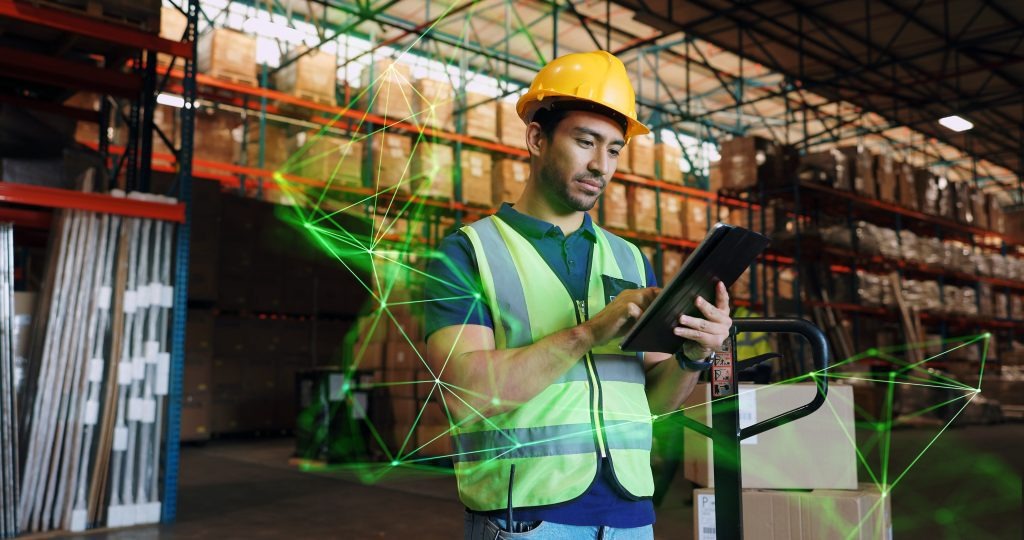Introduction to Outbound Logistics
Definition and Importance
Outbound logistics refers to the process of moving finished goods from a business to the end consumer. This includes order processing, picking, packing, shipping, and delivery. The primary goal is to ensure that products reach customers efficiently and in perfect condition.
Outbound logistics are important. They affect how happy customers are, how fast deliveries are, and if a business succeeds. Good outbound logistics can make a business stand out in a tough market, and investing in this area is key.
How It Differs from Inbound Logistics
In supply chain management, inbound and outbound logistics play different roles. Inbound logistics is about getting raw materials and goods into the business for making products. Outbound logistics is about sending finished products to customers.
Understanding this distinction helps businesses streamline their logistics processes and optimize each stage for maximum efficiency and cost-effectiveness.

Key Components of Outbound Logistics
Order Processing and Fulfillment
Order processing is the first step in outbound logistics. It involves receiving and verifying customer orders, ensuring the correct items are available, and preparing them for shipment. Efficient order processing minimizes errors and speeds up the fulfillment process, leading to higher customer satisfaction.
Order fulfillment completes the cycle. This involves picking the right products, packing them securely, and preparing them for delivery. The accuracy and speed of order fulfillment are crucial for meeting customer expectations and reducing return rates.
Picking, Packing, and Shipping
Picking involves selecting the right items from inventory to match a customer’s order. This step requires precision to avoid errors and ensure that customers receive exactly what they ordered.
Packing is the next critical step. It involves securely packaging the items to prevent damage during transit. Effective packing materials and techniques are essential for protecting products and minimizing shipping costs.
Shipping, the final stage, involves coordinating with transportation providers to ensure on-time product delivery. The choice of shipping methods and carriers can significantly impact delivery times and costs.
Transportation and Delivery
Transportation is the backbone of outbound logistics. It involves moving products from the warehouse to the customer. This stage requires efficient route planning, load optimization, and coordination with carriers to ensure timely delivery.
Delivery is the end goal of the transportation process. Meeting delivery deadlines is crucial for customer satisfaction. Effective delivery management involves tracking shipments, handling last-mile delivery challenges, and ensuring that products arrive in perfect condition.

Outbound Logistics Process
Step-by-Step Breakdown
The outbound logistics process involves several steps, each crucial to ensure that products reach customers efficiently.
- Order Reception: Receive and verify customer orders.
- Inventory Check: Ensure the ordered items are available in stock.
- Order Picking: Select the items from the inventory.
- Order Packing: Securely package the items for shipment.
- Shipping Coordination: Arrange transportation and choose carriers.
- Delivery: Ensure that products are delivered to customers on time.
Role of Technology in Improving Efficiency
Technology helps make sending goods out faster and smoother. It uses smart software to handle orders, keep track of stock, and find the best delivery paths. Automated systems read up on mistakes, speed things up, and let you track everything as it happens.
TMS platforms come with tools for picking carriers automatically, planning routes, and tracking shipments. This makes everything more efficient. Plus, using tech helps make things smoother and keeps customers happy by making deliveries faster and more transparent.

The Impact of Outbound Logistics on Supply Chain.
Enhancing Customer Satisfaction
Outbound logistics directly influences customer satisfaction. Timely and accurate deliveries ensure that customers receive their orders as expected, leading to positive experiences and repeat business. Efficient outbound logistics can be a key advantage in a competitive market.
Meeting Delivery Deadlines
Maintaining customer trust and satisfaction depends on meeting delivery deadlines. Precise order processing, effective packing, and optimized transportation as part of efficient outbound logistics processes ensure on-time product delivery.
Reducing Costs
Improving how you handle orders, pack, and ship goods can cut costs a lot. By making these processes better, businesses can make fewer mistakes, pay less for shipping, and work more efficiently. They can use the money they save to grow and come up with new ideas.
Challenges and Solutions in Outbound Logistics
Managing Last-Mile Delivery
Last-mile delivery is one of the most challenging aspects of outbound logistics. It involves getting products from the transportation hub to the final destination. Common issues include traffic congestion, inaccurate addresses, and customer availability.
Solutions include advanced route planning software, local delivery partners, and real-time tracking. These measures can help overcome last-mile delivery challenges and ensure timely deliveries.
Inventory Management
Managing your inventory well is key for sending goods out smoothly. Having too much stock means spending more on storage, and not having enough means late deliveries. It's important to keep just the right amount of stock by predicting what will be needed and keeping an eye on what you have.
Using inventory management software helps you get up-to-date info and makes reordering automatic. This way, you always have the right items ready to go.
Customer Service and Expectations
Keeping customers happy with outbound logistics is always a challenge. They want quick, correct, and reliable deliveries. If things don't go as expected, customers might get upset and business could be lost.
The solution is to keep things clear, offer different delivery choices, and fix problems fast. Great customer service can change problems into chances to make customers more loyal.

Future Trends in Outbound Logistics
Automation and Robotics
Automation and robots are changing goods distribution, introducing robot helpers and self-driving trucks in warehouses. These gadgets increase efficiency and reduce errors. Investing in these technologies can set a business apart. Companies that start using them early can keep up with what customers want and stay ahead of others.
Sustainable Practices in Transportation
Sustainability is now key in outbound logistics. Both consumers and businesses want greener practices, like cutting carbon emissions, using renewable energy, and making transportation routes more efficient.
Adopting sustainable practices not only benefits the environment, but also enhances brand reputation. It can also lead to cost savings through improved efficiency and reduced resource consumption.

Conclusion.
Outbound logistics is key in managing supply chains. It involves processing orders, picking, packing, shipping, and delivery.
The goal is to get products to customers efficiently and in top shape. Good outbound logistics boosts customer happiness. It also meets deadlines and cuts costs. This makes it important for investment and improvement.
To stay competitive, businesses must address the challenges in outbound logistics and leverage technology to improve efficiency. Automation, robotics, and sustainable practices are shaping the future of outbound logistics, offering new opportunities for growth and innovation.
FREQUENTLY ASKED QUESTIONS
Outbound logistics is about getting goods from a business to its customers. It covers order processing, packaging, shipping, and delivery. The goal is to ensure that products arrive on time and in good condition.
Related posts

What is Inbound Logistics? Everything you need to know.
In the modern era, the key to success of many businesses lies in efficient logistics practices. Whether you run a small business or manage supply chains or logistics, knowing inbound logistics well can help your operations. This blog post will explain the basics of inbound logistics, why it's important, its benefits, and how to make it better.

Enhancing Inventory Management through Consignment Stock
Inventory optimization is crucial for maintaining seamless operations and one effective strategy that has gained popularity is consignment stock. This approach not only enhances inventory turnover but also improves cash flow, product visibility, and customer satisfaction. In this comprehensive guide, we will define consignment stock. We will explore the concept and its significance. Additionally, we will discuss how it can transform the way you manage your inventory.

What is Third Party Logistics (3PL)?
In simple terms, third-party logistics refers to the outsourcing of e-commerce logistics processes to a third party. These tasks involve managing inventory, storing goods, packing, and shipping products to ensure a smooth transition from supplier to customer. Today's fast-paced, globalized economy critically depends on the role of third party logistics. It enables businesses to scale without the need for massive capital investments in warehouses, technology, and staff. This allows them to focus on core competencies like product development and market expansion.
